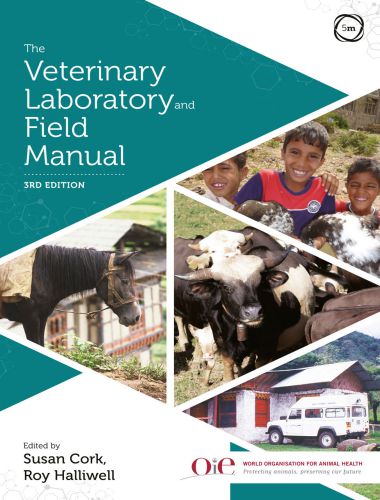The Veterinary Laboratory and Field Manual, 3rd Edition
by

Donor agencies have made significant investments to support the improvement of veterinary extension services in low- to middle-income countries.
This has often been accompanied by the establishment of laboratory networks. Despite a growth in both the number and capability of diagnostic laboratories, it remains evident that these services have often had a limited impact on the well-being of farmers in isolated rural communities or on the health and productivity of their livestock.
Investment has often been focused on larger-scale agricultural enterprises and infrastructure and reporting systems at the national or regional level. Farmer and community contact remains predominantly with animal health extension services at the district level where resources are generally limited and laboratory support and facilities are poor.
With the origin of many emerging and re-emerging human and livestock diseases often traced back to rural settings, where there is close interaction between humans, domestic animals and wildlife, it is essential that a broad One Health approach to disease detection is adopted and that the sustainable development and delivery of effective animal health extension services is supported. Nutritional Management of Hospitalized Small Animals
To achieve this, it is important to enhance collaborations and information exchange between and within government agencies. Early detection and rapid response to disease outbreaks in animals also requires access to a reliable and affordable veterinary diagnostic service. The most important role of district and smaller regional veterinary diagnostic laboratories is to provide technical support for veterinary and animal health extension staff so that they can provide reliable animal health advice to the end-user, that is the farmer/community.
This support includes the provision of technical advice, as well as diagnostic support, especially with regard to the submission of appropriate diagnostic samples and the interpretation of test results. The quality of the service provided depends on the level of training and experience of the staff, the availability of resources and on fostering good communication between field and laboratory based staff. In many cases the availability of training opportunities and suitable text books is restricted to staff based at well-resourced central and urban facilities.
This Book is Available For Premium Members Only (Register Here)
Unlock 3000+ Veterinary eBooks or Go To Free Download
